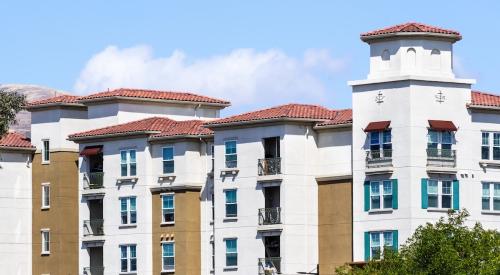Other than the temporary shutdowns of work sites during the pandemic, construction work on multifamily housing developments continued to hum along through 2020 and into 2021. In all, 285,000 multifamily units were delivered throughout U.S. markets in 2020, down about 7% from 2019, but not nearly as severe a drop as many had predicted.
According to a new Yardi Matrix report, the multifamily sector has a "robust pipeline" of new projects, with some 765,000 units in some stage of construction as of early 2021. This "should keep deliveries above that 300,000 mark for the next few years." The firm projects 327,718 units will be delivered in 2021.
RELATED: 131 Multifamily Amenities Ranked by Developers, Builders, and Architects
Here are the top 25 multifamily markets for 2021, by total number of construction completions projected for 2021, according to Yardi Matrix (HOVER ON THE CITY TO SEE DATA):
From the Yardi Matrix report: "On an absolute basis, the markets with the most units to be delivered in 2021 include Dallas (22,909 units, 3.0% of existing stock), Miami (16,262 units, 5.4%), and Washington, D.C. (14,541 units, 2.7%). Unsurprisingly, all three of the Texas metros fall in the top 10, with Houston (11,500) in fourth place and Austin (10,301 units) in seventh place. Some metros, especially in Texas, that had large increases in supply in recent years have moderated a little, but long-term growth is high in Sun Belt and Western markets."
The report continued: "High-cost gateway markets have taken the biggest hit as apartment dwellers search for more affordable housing during a downturn in which the economy has lost 10 million jobs. Among gateway markets, Boston has the most forecast deliveries in 2021, at 3.7% of existing stock, followed by San Francisco (2.8%), Washington, D.C. (2.7%), Los Angeles (2.6%), Chicago (2.2%) and New York City (1.3%). The mass exodus out of the gateway markets could affect the leaseup of these new deliveries over the next few years, especially since most of the new supply is concentrated in the Lifestyle segment."















